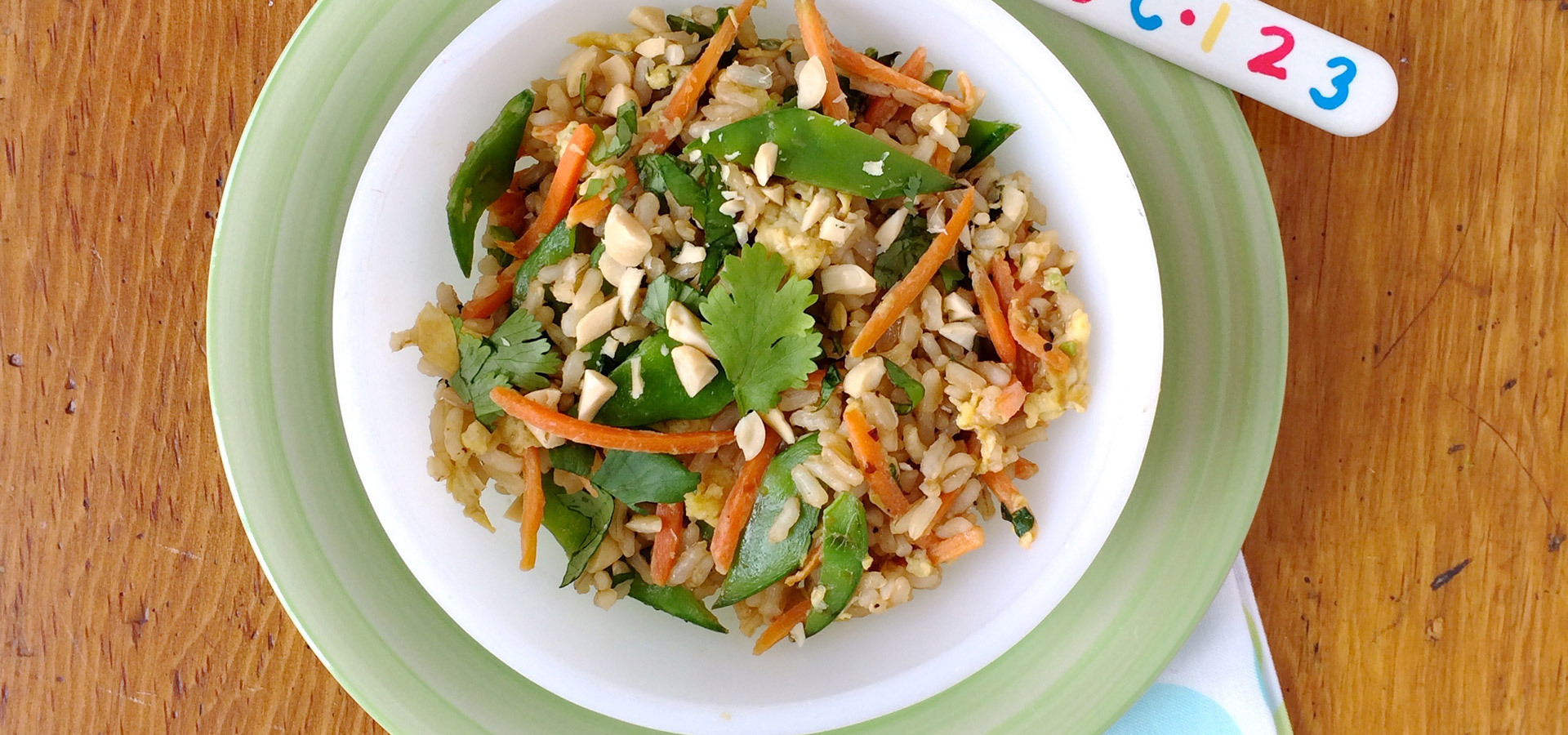
Whole Grain Goodness: Brown Rice Veggie Bowls
- Home
- Live Well Blog
- Whole Grain Goodness: Brown Rice Veggie Bowls
Eating whole grain foods—things like brown rice, corn tortillas, oatmeal, and 100% whole wheat breads and pasta—is good for the health of your family. Whole grains are more nutritious than refined grains; they contain fiber, which fills you up and keeps you full longer, and they’re also good for your heart.
At least half of the grains you choose each day should be whole grains. To meet that goal, choose whole grain cereals or muffins in the morning, make wraps with whole wheat tortillas for lunch, and try brown rice or whole grain pasta with dinner.
Brown Rice Veggie Bowls
Some children are used to seeing white rice on the dinner table, so they may be surprised when the more nutritious brown-colored rice is served. But since there are so many fun colors in this dish—green snow peas, orange carrots, and yellow eggs—you can have lots of fun naming the colors and tasting each one … including the brown rice!
MAKES 3 TO 4 SERVINGS
- 1 cup instant brown rice
- 1 teaspoon canola oil
- 4 ounces snow pea pods, trimmed and cut diagonally into 4 to 5 pieces each, (about 1 cup)
- 1 cup pre-cut matchstick carrots
- 3 green onions, root ends removed, white and light green parts thinly sliced
- 2 large eggs
- 1 tablespoon water
- 3 tablespoons light teriyaki sauce
- 2 tablespoons chopped fresh cilantro, optional
- 2 tablespoons chopped roasted peanuts, optional
- Cook rice according to package directions. (You’ll end up with about 2 cups cooked rice.) While rice cooks, heat oil in a large nonstick skillet over medium-high heat. Add snow peas, carrots, and green onion and cook, stirring frequently, until tender, 5 minutes.
- Place eggs and water in a bowl and whisk until well combined. Add to skillet and scramble until eggs are set, 1 minute. Stir in cooked rice, teriyaki sauce, and cilantro as desired. Reduce heat to low and warm through, stirring, about 1 more minute.
- Serve in bowls and top with peanuts as desired.
Tip: For more protein, top with chopped cooked chicken, beans, or cooked tofu.
Nutrition Information per Serving (about 1 cup):
200 calories, 5g fat (1g saturated, 0.2g omega-3), 350mg sodium, 30g carbohydrate, 4g fiber, 8g protein, 140% vitamin A, 45% vitamin C, 10% iron
Whole Grains Blind Taste Test
HERE’S HOW IT WORKS:
1
Ask your children if they want to play the Blind Taste Test game. If they say, “yes,” have them close their eyes or put on a blindfold.
Toast one slice of white bread and one slice of whole wheat bread. Top each with your child’s favorite jam, jelly or peanut butter. Ask your taste tester to take a bite of each slice and then vote for their favorite. They can raise two hands if it’s a tie.
2
3
Do the same taste test with white and whole wheat pasta. Cook one cup of each, toss with pasta sauce, and then let the kids place their votes.
Other foods to compare include whole grain crackers versus regular crackers, whole wheat bagels versus white, and a whole grain breakfast cereal versus a refined one.
